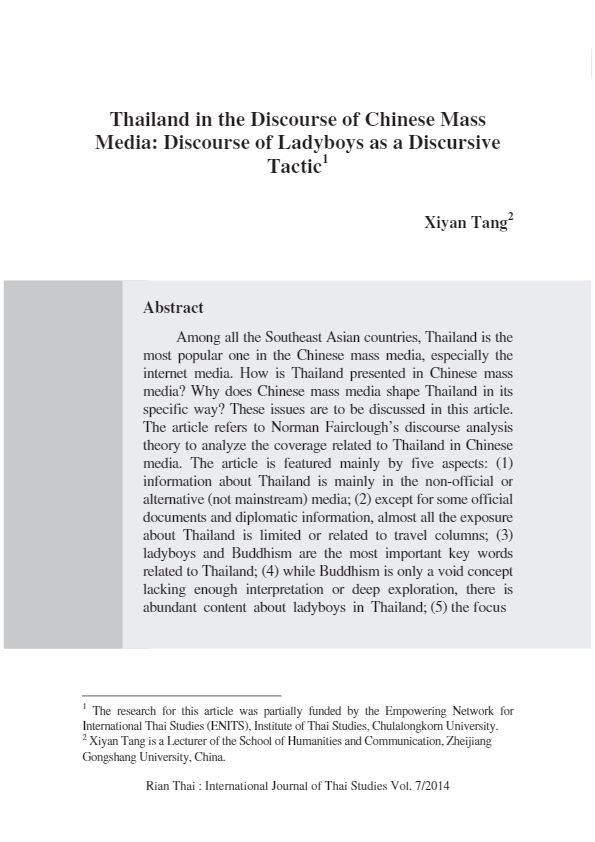Xi Yan Tang
Abstract
Among all the Southeast Asian countries, Thailand is the most popular one in the Chinese mass media, especially the internet media. How is Thailand presented in Chinese mass media? Why does Chinese mass media shape Thailand in its specific way? These issues are to be discussed in this article. The article refers to Norman Fairclough’s discourse analysis theory to analyze the coverage related to Thailand in Chinese media. The article is featured mainly by five aspects: (1) information about Thailand is mainly in the non-official or alternative (not mainstream) media; (2) except for some official documents and diplomatic information, almost all the exposure about Thailand is limited or related to travel columns; (3) ladyboys and Buddhism are the most important key words related to Thailand; (4) while Buddhism is only a void concept lacking enough interpretation or deep exploration, there is abundant content about ladyboys in Thailand; (5) the focus around the ladyboy topic is body/flesh. Considering the dominant ideology in China after 1949, the author argues it is actually a discursive tactic of comparatively weak media which, on the one hand, has to obey the dominant ideology and its related rules in that country, and, on the another hand, hopes to attract its readers to capture the power to break into the array of mainstream media. As a by-product, this tactic has helped to shape the stereotype of Thailand in the Chinese mass media discourse. From the analysis of the discourse of ladyboys, the author also provides insight into the Chinese journalistic expertise, and offers a tripolar interactional expertise model.
(Published in Rian Thai: International Journal of Thai Studies, Volume 7/2014, Page 217-241)
Full Text : Download
